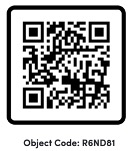I. Introduction
The remarkable, donut-shaped molecule to your left is the beta subunit of DNA polymerase III of E. coli (pol III). This subunit provides for the remarkable processivity of the holoenzyme during DNA replication. Processivity refers to ability of polymerases to add many hundreds or thousands of nucleotides to a growing chain without dissociating from the template. Processivity partially accounts for the rapid rates of DNA synthesis by DNA polymerases. For example, E. coli replicates its entire genome in ~40 minutes (~80,000 bp/min). The pol III beta subunit is a ring-shaped clamp that embraces DNA in a central 35 angstrom hole, tethering the remainder of pol III to the template. return to beginning of the exhibit II. Monomer and Dimer StructureThe beta subunit is a homodimer of two, 366 amino acid monomers, each monomer providing one half of the clamp. The dimer interface is a novel continuation, across the monomer boundary, of a beta sheet structure, indistinguishable from intra-monomer beta sheets (one interface is illustrated here). In addition to four strong hydrogen bonds that link the beta strands across the interface, there are several other linkages helping to stabilize the dimer, including:
The beta subunit monomers are arranged in a head-to-tail (N-C-->N-C-->) orientation. This produces non-symmetric faces of the dimeric ring. The two carboxy termini project from the face that binds the remainder of the Pol III holoenzyme. Note that this face contains prominent loops that are well-suited to bind other pol III subunits.
Each
monomer comprises three domains with nearly identical structure, but
not identical amino acid sequence. The
amino,
central,
and carboxy
domains each harbor an outer layer of two beta
sheets that support 2 inner alpha helices.
Thus,
the core of the dimeric clamp is lined with 12
alpha helices (2 helices/domain x 3 domains/monomer
x 2 monomers).
return to beginning of exhibit III. Interaction with DNAThe 35 Angstrom hole of the beta dimer is large enough to accommodate double helical nucleic acid with little steric hindrance as modeled here for B-DNA (~20 Angstrom diameter). The tilt of the 12 central alpha helices is similar due to the symmetrical arrangement of the six domains. The axis of each alpha helix can be seen to be perpendicular to the sugar-phosphate backbone of both major and minor DNA grooves when the DNA is modeled perpendicular to the plane of the beta clamp ring. Many DNA-binding proteins contain alpha helices that are oriented parallel to the nucleic acid backbone. This orientation allows the alpha helices to recognize and fit into the major groove of target DNA. In contrast, the perpendicular orientation of the beta clamp helices and DNA backbone seems designed to prevent access of the protein to either DNA groove and therefore to facilitate rapid sliding of the clamp along the DNA axis.
These
principles hold for interaction with A-form DNA-RNA duplexes (~25
Angstrom diameter), found at the site of initial clamping of the Beta
subunit at the RNA-primed template of the start of an Okazaki fragment.
return to beginning of exhibit IV. ReferencesKong, X-P., Onrust, R., O'Donnell, M., and J. Kuriyan (1992). Three-Dimensional Structure of the Beta Subunit of E. coli DNA Polymerase III Holoenzyme: A Sliding DNA Clamp. Cell 69: 425-437.
return to beginning of exhibit |
